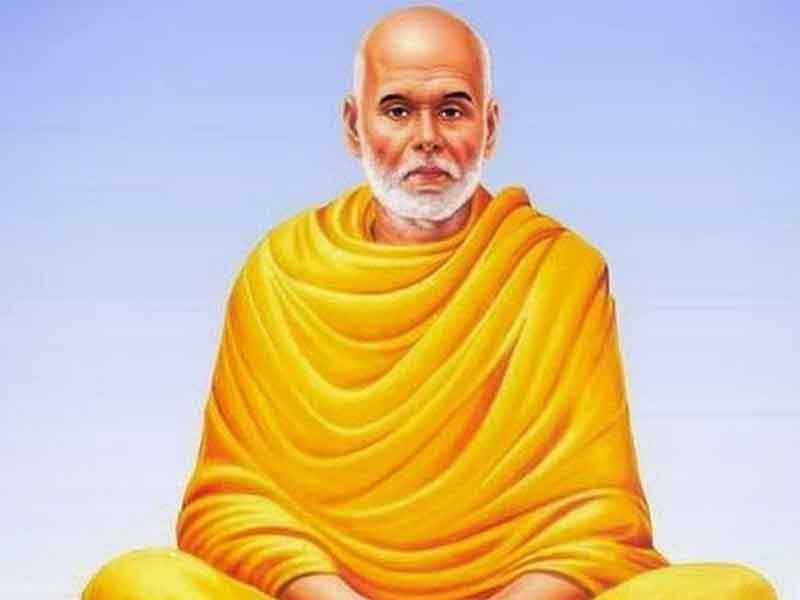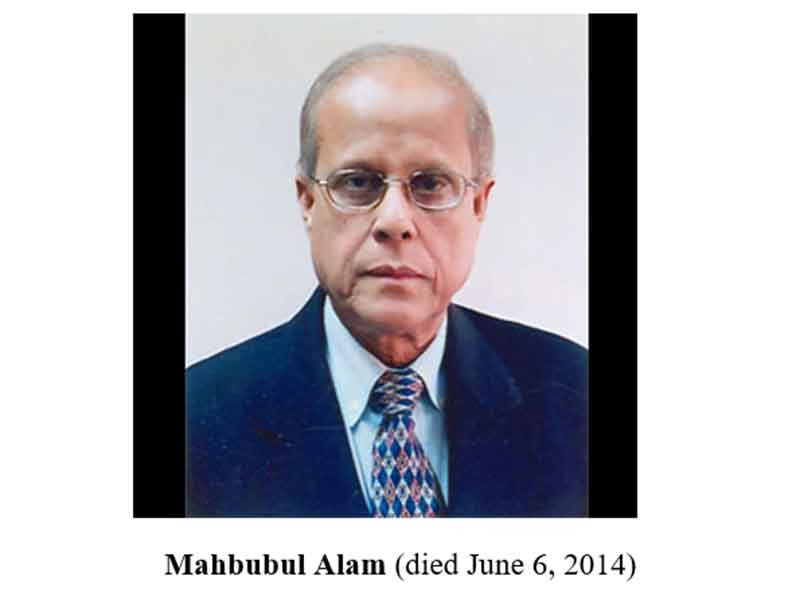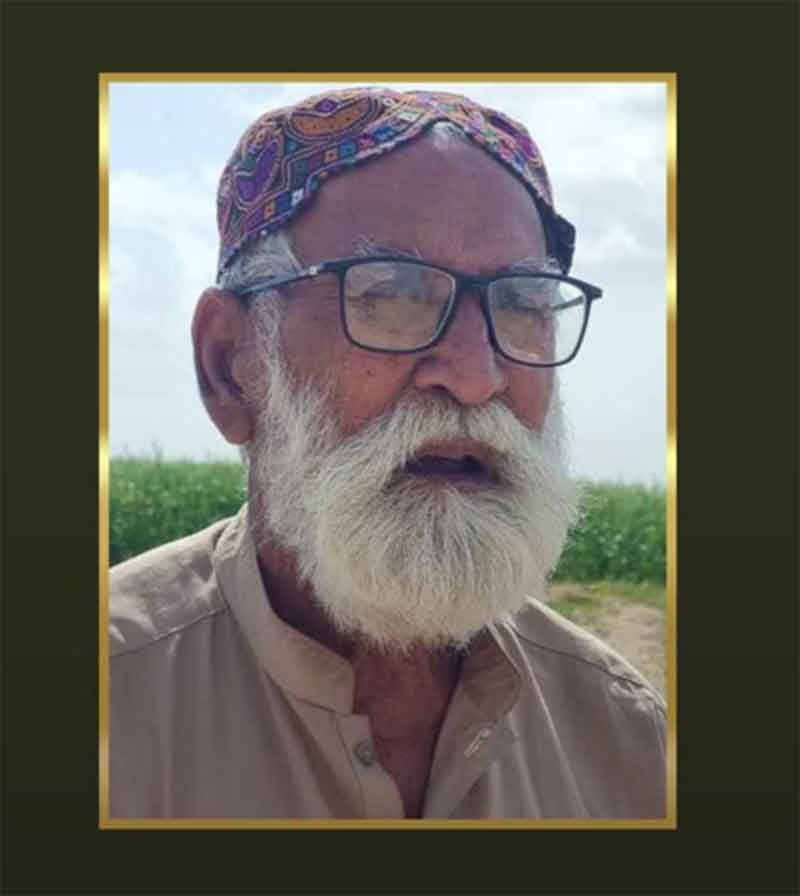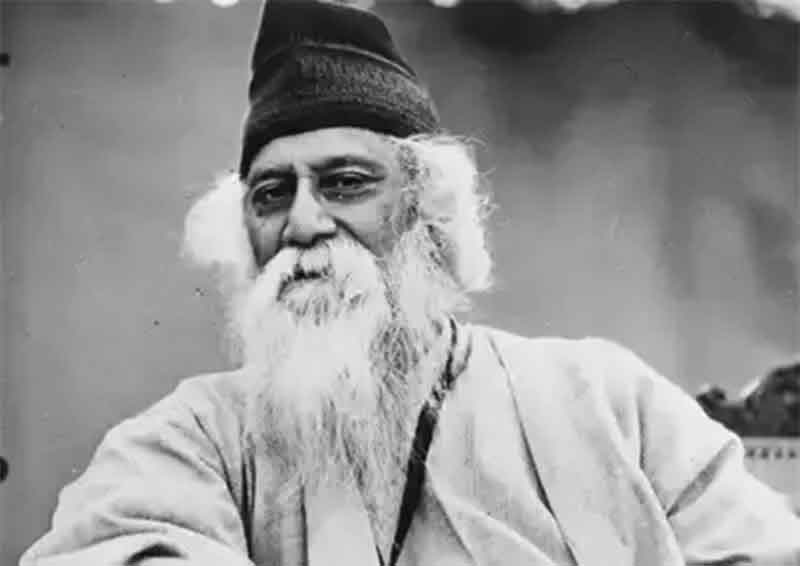A humble request to all the soldiers of Rashtriya Seva Dal from all over the country and to all the friends of Chhatrabharati, Samajwadi, Antarbharati, Saneguruji Kathamala and Saptahik Sadhna Parivar!
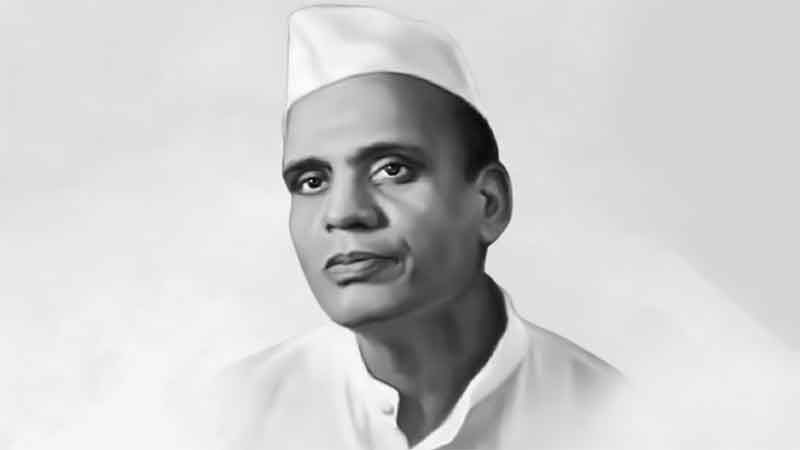
In the last week of the end of the nineteenth century and the beginning of the twentieth century, on 24 December 1899! A week before the beginning of the twentieth century! In a small village named Palgad, in the Konkan region of Maharashtra, with a population of three to four thousand! Saneguruji (Pandurang Sadashiv Sane) was born! That is, a day before Jesus Christ, and mine too! Two thousand one hundred years and twenty-one days ago, just a day before the birthday of Lord Jesus, who gave the message of compassion, love, kindness and peace! Known as (Mauli) after Saint Dnyaneshwar of entire Maharashtra! Mother-hearted Saneguruji was born!
In the beginning, the financial condition was good for food and drink. But in Indian rural areas, nobody knows when someone’s condition will deteriorate. In a way, it is gambling. Similarly, due to lack of education system, he had to struggle a lot for his education from primary education to high school and higher education. He had to face a lot of hardships to get his education till MA. Due to this, while facing poverty, hunger and deprived conditions, he naturally got connected to the poor and downtrodden society through his own life experiences. And the most important time of his life was spent in working for those sections.
However, after completing his studies, Saneguruji came to Pratap High School, a school run by Khandesh Education Society, in Amlaner, a place in Jalgaon district of Khandesh, Maharashtra, to take up a teaching job. He joined as a teacher on 17 June 1924.
But apart from just working as a teacher, due to his sensitive nature, he raised organisations and fought for the problems of the farmers and mill workers of Khandesh to bring about social and economic reforms.
Mainly he formed the workers union of Pratap Mill of Dhule-Jalgaon, Amlaner and the farmers’ organization of Khandesh. And on the basis of that, he was 25 years old at that time and the fight for freedom was going on throughout the country.
After working as a teacher for six years, on 21 April 1930, Saneguruji quietly decided to join the country’s freedom struggle by resigning from his job. And he gave the first speech of his life in Faizpur, the same Faizpur where, six years later, the first national conference of the Congress in a rural area was held in December 1936. In a way, this phase of Saneguruji’s life is the story of his tireless efforts for the next twenty years.
On 17 May 1930, the British government sentenced Saneguruji to 15 months imprisonment for the crime of treason for giving a speech in the Amalner meeting and imprisoned him in Dhule jail. But on the basis of inciting the youth in Dhule jail, he was taken to Trichynapalli jail in the then Madras province of South India within two and a half months.
And it was in this jail that he conceived the idea of Antarabharati! Because that jail was a mini India! Guruji was introduced to the language and culture of prisoners from almost all the states of India among the three thousand prisoners! And there he tried to learn the Tamil language! And translated the famous book ‘Kural’ of the Tamil language saint Kuruvalluvar into Marathi!
Kural is considered the Veda of Tamil language! ‘Kural’ means two verses! Apart from translating such an important literary work, he also wrote a poetry collection named ‘Patri’! Apart from this, Guruji wrote four plays during his prison life in Trichynapalli! And he also translated the literature of some English and French language writers! On 23 March 1931, Saneguruji was released from Trichynapalli jail! And on the same day, Bhagat Singh, Rajguru and Sukhdev were hanged in Lahore jail at night! So Guruji held a meeting against that punishment in Amlaner! He condemned this misdeed of the British government!
After this, he toured Khandesh with Acharya Vinoba Bhave. For the first time in his life, Guruji got the opportunity to travel together. And because of that, he also got close to Vinoba. And after looking at Vinoba’s personality, he also wrote his biography. And in 1932, he again got the opportunity to stay together in Dhuliya jail.
And in this very jail, Saneguruji took notes of Vinoba’s ‘Gita discourses’, and today it is available in the form of a book titled ‘Gitai’. Due to overcrowding in that jail, some prisoners were taken to Nasik jail, which included Guruji too. And in this very jail, he completed the writing of his most talked about and famous book ‘Shyam ki Maa’ in 36 nights. This is his autobiography in a way. And by reading this book, a generation in Maharashtra has been cultured. And even today it inspires many people. ‘Shyamchi Aai’ is probably the most sold Marathi book. And for this reason, Acharya Atre has made a Marathi film on ‘Shyamchi Aai’. And perhaps this is the first Marathi film to receive the national level ‘Rashtrapati Suvarna Mayur’ award.
Before this, while in Dhuliya jail, he translated both the books of Rabindranath Tagore, ‘Sadhana’ and ‘Swadeshi Samaj’. By translating world-famous works, Saneguruji has made a huge contribution to Marathi speaking people. Apart from his own poems, essays, stories, novels, I have not seen any Marathi speaking writer equal to Saneguruji in the translation work of other literature. Overall, in his life of 51 years, looking at his tenure of literature, public work and inculcating values in the young generation that came in his company, it seems that Guruji himself was a school and the result of that was the establishment of Rashtra Seva Dal on 4 June 1941. Because Rashtra Seva Dal was established to compete with RSS, which was built on extreme communalism.
For the first time after the establishment of Congress in 1885, the credit of organizing the Congress session in a village goes to Sane Guruji. In 1936, i.e. 51 years after the establishment of Congress, in a village named Faizpur in Jalgaon district of Khandesh. After completing half a century, the session was held in Faizpur due to the tireless efforts of Sane Guruji. Whose president was Pandit Jawaharlal Nehru. In which a volunteer organization named ‘Rashtra Seva Sangh’ was formed for the convention of volunteers. To organize the first session in remote rural areas under his leadership. Sane Guruji’s hard work paid off. And I am proud that my father was also among the volunteers of this Rashtra Seva Sangh.
There are other important stages in Sane Guruji’s life. In January 1941, Madhu Limaye was in the children’s ward in Dhuliya jail. And his first face-to-face meeting with Guruji. At that time Madhuji was eighteen years old and Guruji was over forty-two. That means Sane Guruji, who was of the age of a father, was with Madhu Limaye, who was of the age of a son. In the first meeting in Dhuliya jail, he understood that this boy was ideologically very perfect. And due to the movements of the mill workers and farmers of Khandesh, Guruji was under communist influence due to being in the company of communists. But about the indecisive policies of the Communist Party during the Second World War. (Earlier, a prisoner of war agreement had been signed between Stalin and Hitler regarding the Second World War and the partition of Poland had been decided. That is why initially the communists were calling that war a ‘war against imperialism’. But despite that, after Hitler attacked Russia, the attitude of the communists changed and they started calling it ‘People’s War’.) And on socialism, Madhu Limaye gave nineteen speeches in Dhuliya Jail and because Sane Guruji took notes of those speeches, Guruji who was under communist influence, came under the influence of a boy of his son’s age and became a pure socialist. And due to the opposing role of the Communist Party from the Second World War to the Quit India Movement of 1942, Sane Guruji became completely disillusioned with the Communist Party and ideologically, he remained under the influence of Madhu Limaye in the times to come. Guruji had a lot of affection and respect for Madhuji. It is even said that “if Guruji and Madhuji had met properly in 1950, then perhaps Guruji would not have committed suicide.”
And five years later, on 4 June 1941, the idea of establishing Rashtriya Seva Dal came to the minds of socialists like S.M. Joshi, N.G. Gore, Bhausaheb Ranade, Shirubhau Limaye, Annasaheb Sahasrabuddhe etc., which Saneguruji used to call his life breath. And the reason for that was the establishment of RSS. Sixteen years later, Rashtriya Seva Dal has been formed to stop the growing communalism and casteism. The only reason I have to repeat this again and again is that we, the people of Rashtriya Seva Dal spread across the country, have forgotten this.
Because 35 years ago, after the October 1989 Bhagalpur riots, I had written the same thing in detail in a letter to the then office bearers during the 50th anniversary of the Rashtriya Seva Dal (1991), “that for at least 50 years in the future, the focus of Indian politics will be only and only communalism!” Therefore, on the occasion of the completion of 50 years of the Rashtriya Seva Dal, the focus of India’s parliamentary politics for the next 50 years will be only and only communal politics! Therefore, the then President of India K.R. Narayanan was to come as the chief guest in the 50th anniversary celebrations of the Rashtriya Seva Dal. That is why I had requested in my letter that “In the presence of the President, the Rashtriya Seva Dal should administer an oath to its countrymen that for the next ten years at least, our workers will work primarily on the issue of communalism. That for the decade from 1991 to 2001, our workers will work primarily on the issue of communalism.” But leave alone any reply to my letters, I have not even received an acknowledgement. This correspondence is from eleven years before the Gujarat riots and before the beginning of the political career of someone like Narendra Modi.
Saneguruji has been one of the most sensitive and poetic hearted writers. He has not written literature just for entertainment. He has written against the exploitation and inequality and injustice, atrocities and extreme communalism. His literary works are stories, novels, poems and essays. For example, his most favourite song is my favourite song which I wish to make a song for all. A meaningful song like “The true religion is that which should be offered to the world with love!” (Khara to ekchi dharm jagaala prem arpave!) It is equal to “Pasaydan” of Sant Gyaneshwar.
Similarly, the novel named ‘Shamu ki Maa’, an autobiographical writing, is counted among the global masterpieces! And by reading it, Saneguruji is credited with shaping the lives of so many generations of Maharashtra! At least it has been very important for shaping people like us!
On which the famous Marathi writer and editor Acharya Atre ji has also made a film! And for the first time, a Marathi film has been awarded the President’s Golden Peacock Award! Similarly, the book named Bharatiya Sanskriti, underlining the importance of India’s Ganga-Jamuni culture! To promote the multifaceted culture of India, this book Bharatiya Sanskriti needs to be translated into all the languages of India!
And in this context, he has written the idea of Antarbharati before his death! In which the people of a multilingual, multicultural country like India should try to learn the language of other states in addition to their own language! And to know and understand each other’s culture, one should go to other states and learn their food, festivals, literature, art and languages! Otherwise, even after independence, there will be no interaction among the people of our country! Then what will happen with the different countries of the world?
Sensitive people like Saneguruji are born only once in a while in the world! In our country, Saneguruji’s name comes in the line of Kaviguru Rabindranath Tagore, Mahatma Gandhi, Acharya Vinoba Bhave, Saint Dnyaneshwar – Tukaram, Saint Kabir Nanakdev, Basveswarji, Mahatma Phule, Dr. Ram Manohar Lohia, Dr. Babasaheb Ambedkar, Acharya Javadekar, Acharya Narendra Dev, Jayaprakash Narayan!
In a total span of 51 years, 5 months and 18 days, he has prepared a generation in Maharashtra to build a society based on the values of freedom, democracy, equality and religious harmony. And even after that, that process continues. We, the soldiers of Rashtra Seva Dal, may have been born after the death of Sane Guruji on 11 June 1950, and despite not getting a chance to see and listen to him, whatever we have heard and read from his literature and from my father who was in his company, to father-like people of our public life like S.M. Joshi, N.G. Gore, Barrister Nath Pai, Madhu Limaye, Professor Madhu Dandavate, Professor G.P. Pradhan, Yadunath Thatte, poet Vasant Bapat, has helped a lot in shaping the personality of us, the soldiers of Rashtra Seva Dal.
Saneguruji may have been born in Konkan and his primary education was in Konkan and college education in Mumbai and Pune. But due to his teaching job, he got a job as a teacher in Pratap High School of Amlaner, a region named Khandesh in Maharashtra. And his area of work was in the (Dhule, Jalgaon and Nashik) division. For his social, educational, cultural and political work, the most important time of his life was in the region of Khandesh. Almost half of his life.
Pratap High School also had a hostel. So Saneguruji was also given the additional responsibility of the hostel superintendent. Due to this, the maternal heart in Saneguruji manifested itself. The motherly love he showed to the students and the service he provided to them during their illness. Due to this, he is also called Matri Hridayi or Mauli (mother). And some of the students who took advantage of this kind of service, Madhukarrao Chaudhary, Shivajirao Patil, his elder brother Uttamrao Patil, Prakash Mohadikar etc., who came into public life in Maharashtra, have called him Matri Hridayi on the basis of their experiences.
The most important and last act of Saneguruji’s life is the fast he did for Harijan entry in Vitthal temple of Pandharpur. Before this, Dr. Baba Saheb Ambedkarji had done Satyagraha for six years on 1st March 1930 at Kala Ram temple of Nasik for temple entry. And in response to that, in the same year, he had made his historically famous declaration in Yeola taluka which is also in Nasik district that “I was born in Hindu religion, but I will definitely renounce Hindu religion before I die.” But due to discrimination by hard working people within Hindu religion, twenty years later, Dr. Baba Saheb Ambedkarji along with his lakhs of followers had to take initiation in Buddhism on 14th October 1956 in Nagpur on Dussehra. And this trend has been continuing for thousands of years.
Because dogs and cats can easily climb on the idol in the temple! But people from the untouchable community cannot see that idol! And due to these bad practices! Today, most of the Muslims, Christians and Hindus have left this religion! And Swami Vivekananda also said this in his speeches during his stay in South India before going to Chicago! That “Christianity or Islam has come to India sitting on the shoulders of our caste system!” But despite this, this is also one of the main reasons for the anger of the so-called Hindutva people on the minority community!
Forget thinking about this, even today in Uttarakhand, whose other name is Devbhoomi, Dalits are not allowed to enter temples. And in the same Uttarakhand, Haridwar’s Dharma Sansad was held on 17, 18, 19 December, i.e. a week ago. In which a series of venomous speeches were made against the minority communities. If we look at the reason behind it, anger is being expressed against the disgusting caste system of Hindu religion that Dalits had revolted against thousands of years ago. But no speaker spoke about the high status of Hindu religion and opening of Uttarakhand’s temples for Dalits. On the contrary, their ancestors, fed up with this caste system, adopted other religions because they have got equal entry in mosques and churches. In the words of Dr. Ram Manohar Lohia, “There is a five thousand year old battle between fundamentalists and liberals in Hindu religion. Which is going on at its peak in our country today.” Examples of the Haridwar Dharam Sabha or the attacks on people from minority communities in Karnataka or other areas of the country show that! This hatred reflects the same thing! The question is about the inaction of the governments of the country and the state! These are the same governments! When incidents of atrocities against Dalits, tribals and women took place, what all did they not do to suppress and eliminate them? Even people who went to investigate and gather information about the incident were put in jails under the law of treason! And what is the proof of no action being taken in view of the speeches that are like civil war within the country?
And the silence of people sitting in important positions like Prime Minister, Home Minister, is an indirect support! In a way, pointing towards an undeclared Hindu nation, they have started erasing the multifaceted culture of India! It is even more surprising to see all this on the occasion of Saneguruji’s 125th birth anniversary!
After the historic Poona Pact of 1932, during the Harijan Yatra led by Mahatma Gandhi, the doors of thousands of temples across the country were opened for Harijans. But even today Harijans are not allowed to enter some temples. This was a matter that hurt sensitive people like Sane Guruji. Harijans were not allowed to enter the Vitthal temple of Pandharpur, the most popular temple of Maharashtra-Karnataka. The independence of the country was within sight. But Harijans were not allowed to enter due to some people with discriminatory mentality. Therefore, in November 1946, Sane Guruji made an announcement that attracted the attention of the entire Maharashtra. That till Harijans are not allowed to enter the temple of Pandharpur, the fast unto death will continue.
This news caused a great stir in the whole of Maharashtra. This announcement was made when Guruji had gone to rest at his brother’s house in a seaside village near Mumbai named Bordi. So, S.M. Joshi, Madhu Limaye, Senapati Bapat, Achyutrao Patwardhan and Shirubhau Limaye, these five people immediately went to Bordi. And they tried to convince Guruji that he should not fast suddenly like this, he should fast only after creating public awareness in the whole of Maharashtra. And thus, after six months of publicity, it was decided to fast.
During these six months, the movement for temple entry was promoted with great vigor by the artists of Rashtriya Seva Dal and by others throughout Maharashtra. But the Badve (priest) of the temple played a game that if the public opinion of Maharashtra was in favor of temple entry, then the temple would be opened for Harijans.
But this was a political trick of the big people! So after six months, on 1st May 1948, Sane Guruji and Senapati Bapat went to Pandharpur and started a fast unto death in Tanpure Maharaj’s monastery!
And in the meanwhile many developments took place. In which despite the letters of Mahatma Gandhi and correspondence of Acharya Vinoba Bhave, after Guruji’s ten days of fast, the temple’s Badve agreed to open the doors of the temple for Harijans. On the night of 10 May 1948, Sane Guruji ended his fast on 8-35. This would be the biggest achievement of the last time of Sane Guruji’s life. Because only some formalities were left for the independence of India.
The question is how will India become a caste-secular egalitarian democracy after independence? And he fought the battle for temple entry in Pandharpur accordingly!
But within a year, he was engulfed by despair. Even after India’s independence, the tribals in the jungle are not afraid of tigers but are afraid of the police or forest guards. He was saddened by other problems. Most of all, due to the assassination of Mahatma Gandhi, he decided to leave this world on 11 June 1950.
Perhaps sensitive people like Sane Guruji, Jayaprakash Narayan, who were so sensitive on the issues of the country and the world that they used to cry in public meetings with a population of lakhs! JP may have been married! But he followed celibacy even after living with Prabhavati ji all his life! And Sane Guruji remained unmarried all his life! Therefore, there was no problem of family life of both! But he was so engrossed in the problems of both the people! That he used to get sad by considering the problems as his personal problem! And he could not stop his tears in a crowded meeting! The way three years ago! The tears of the farmer leader Mr. Rakesh Tikait have breathed life into the almost dying farmers’ movement! This is the most recent example of the result of tears!
And very sensitive people like Sane Guruji! Due to his emotional concentration related to these problems! Even when it was three years since independence, seeing poverty, unemployment, hunger, and injustice and atrocities of the police! He became very restless and decided to leave this world!
Compared to such people, our feelings are very shallow. Because of this, we become accustomed to living our lives comfortably. People like Sane Guruji are very rare in the world. Looking at the condition of the country and the world, after completing half a century of his life, he chose to leave this world on 11 June 1950. Today, it will be 75 years since Guruji left us in his physical body and 125 years since his birth. Meanwhile, the influence of communal forces has been increasing for the last 30-35 years. Right now, Merry Christmas is being celebrated all over the world on the occasion of Christ’s birthday. But in India, for the last two months, Hindutva people have been continuously attacking churches and places of worship. Twenty years before this, the politics of state-sponsored hatred was seen in Gujarat.
First on the people of Christian religion, and later after the Godhra incident of 27 February 2002, thousands of people of minority castes were murdered and their means of livelihood were destroyed under a pre-planned scheme. This was the first time after independence that a ruling party carried out a program to kill them! And the same person occupies the highest post in the country by doing the politics of that violence! This is one of the accidents that will be recorded in history as the biggest flaw of Indian democracy! And a hundred years ago, Hitler and Mussolini of Germany and Italy of the European part also won elections through so-called democracy and forced the whole world into the Second World War! Therefore, winning elections and coming to power cannot be the only criterion!
Subscribe to Our Newsletter
Get the latest CounterCurrents updates delivered straight to your inbox.
This is the biggest defeat of post-independence values and sensitive people like Saneguruji! And indeed, this is the biggest challenge for all those of us who are trying to fulfill Saneguruji’s dreams! And I have been continuously writing and speaking about this crisis for the last more than thirty-five years! But I have not been successful in convincing our comrades till now! Now some are doing symbolic work like Bharat Jodo, some are leaving hatred! But an organization has been continuously propagating communalism and caste-religion hatred for the last hundred years! And as a result, there was never so much communalism in the history! As much it has spread today! True tribute to Sane Guruji, he left this world due to the reasons! All of us comrades should devote ourselves to make it better! Otherwise, I doubt whether we will even be in a position to write and speak this! And the biggest responsibility lies with the patriotic friends of Rashtra Seva Dal! Whom Saneguruji used to call his life breath!
Dr. Suresh Khairnar, former President Rashtra Seva Dal



